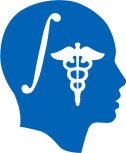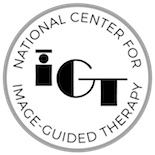MICCAI 2010

| ||

|

|

|
Contents
From MICCAI Algorithms to Clinical Translational Tools: The NA-MIC Platform
Outline: MICCAI offers a window on the technological breakthroughs in medical image computing, computer assisted interventions and surgical robotics that will allow for revolutionary progress in clinical care. A critical step to maximize the long-term positive impact of MICCAI algorithms is to foster their deployment, validation and concrete use by the clinical research community for whom they were developed. The objective of the tutorial is to introduce the challenges inherent in delivering advanced medical imaging technologies (image processing, analysis and interventional capabilities) to end users for clinical translational research and to present solutions available in the National Alliance for Medical Image Computing (NA-MIC) open-source software toolkit. The day begins with an overview of the software components of the NA-MIC kit, followed by multiple example applications in current use for clinical research, with a final optional hands-on tutorial session that guides participants through the process of building, testing and deploying an exemplar algorithm using the NA-MIC open-source software toolkit.
Through concrete examples drawn from the translational research efforts of NA-MIC, this tutorial provides insights on practical approaches for bridging the gap between the scientific advances made by the biomedical imaging community and their widespread use in the clinical research community. By the end of the day course participants will know how to use the NA-MIC kit to facilitate greater use of their own algorithms by clinical end users.
Organizers
- Ron Kikinis, M.D., Surgical Planning Laboratory, Brigham and Women’s Hospital, Harvard Medical School
- Guido Gerig, Ph.D., The Scientific Computing and Imaging Institute (SCI), University of Utah
- Sonia Pujol, Ph.D., Surgical Planning Laboratory, Brigham and Women’s Hospital, Harvard Medical School
- Martin Styner, Ph.D., Neuro Image Research and Analysis Laboratory, University of North Carolina
Logistics
The tutorial will be held on Monday September 20, 2010 from 8:30 am to 6:00 pm in room 402A on the L4 level at the China National Convention Center (CNCC), No.7 Tianchen East Road, Chaoyang District, Beijing, China.
To register for the tutorial, please visit the MICCAI 2010 website.
Tutorial format
The tutorial consists of lectures and an optional instructor-led hands-on session with the participants programming on their own laptop computers. A technical training staff will be providing one-to-one assistance as needed.
Tutorial Faculty
- Ron Kikinis, M.D., Surgical Planning Laboratory, Brigham and Women’s Hospital, Harvard Medical School
- Sonia Pujol, Ph.D., Surgical Planning Laboratory, Brigham and Women’s Hospital, Harvard Medical School
- Noby Hata, Ph.D., Surgical Planning Laboratory, Brigham and Women’s Hospital, Harvard Medical School
- Guido Gerig, Ph.D.,The Scientific Computing and Imaging Institute (SCI), University of Utah
- Killian Pohl, Ph.D., Section for Biomedical Image Analysis, University of Pennsylvania
- Dinggang Shen, Ph.D., Radiology and BRIC, University of North Carolina School of Medicine
- Martin Styner, Ph.D., Neuro Image Research and Analysis Laboratory, University of North Carolina
- Stephan Aylward, Ph.D., Kitware, Inc.
- Xiaodong Tao, Ph.D., Visualization & Computer Vision, GE Research
Tutorial Agenda
- 8:45 am - 9:00 am: Introduction and goals of the workshop (Sonia Pujol)
- 9:00 am - 9:15 am: Overview of the National Alliance for Medical Image Computing (NA-MIC) (Ron Kikinis)
- 9:15 am - 9:45 am: NA-MIC Programming Environment (Sonia Pujol)
- 9:45 am - 10:15 am: ‘Hardening’ your software with the NA-MIC kit, regression tests and dashboard (Stephen Aylward/Xiaodong Tao)
- 10:15 am - 10:30 am: Morning Tea/Coffee Break
- 10:30 am - 11:00 am: Building bridges between complementary medical image analysis platforms (e.g. Freesurfer, BRAINS2, HAMMER) (Sonia Pujol)
- 11:00 am - 11:30 am: How to participate in NA-MIC: collaboration grants, user and developer community (Kikinis)
- 11:30 am - 12:00 pm: Exemplar Clinical Research Applications: Image-Guided Therapy (Hata)
- 12:00 pm - 1:00 pm: Lunch
- 1:00 pm - 3:00 pm: Exemplar Clinical Research Applications
- 1:00 pm - 1:30 pm: Image Registration (Dinggang Shen)
- 1:30 pm - 2:00 pm: Image Segmentation: EM Segmenter (Kilian Pohl) and Automatic Brain Segmentation ABC (Guido Gerig)
- 2:00 pm - 2:30 pm: Cortical Thickness Measurements (Martin Styner)
- 2:30 pm - 3:00 pm: Diffusion Tensor Imaging (Sonia Pujol, Guido Gerig Gerig-Slides)
- 3:00 pm - 3:30 pm: Afternoon Tea/Coffee Break
- 3:30 pm - 3:45 pm: Other examples from the community (Ron Kikinis)
- 3:45 pm - 5:30 pm: Optional Hands-on Session: Interfacing your MICCAI algorithm with the NA-MIC open-source toolkit: the ‘Hello Python’ tutorial (Sonia Pujol)
- 5:30 pm - 6:00 pm: Open Discussion and one-on-one consultations for individual projects
Preparation for the tutorial
In preparation for the optional hands-on session, please install the Slicer3.6 release version appropriate to the platform you'll be using, and the HelloPython dataset Hardware minimum requirement: 2GB of main memory and graphics hardware acceleration with 256 MB of dedicated graphics memory (nvidia preferred).
Back to NA-MIC Events